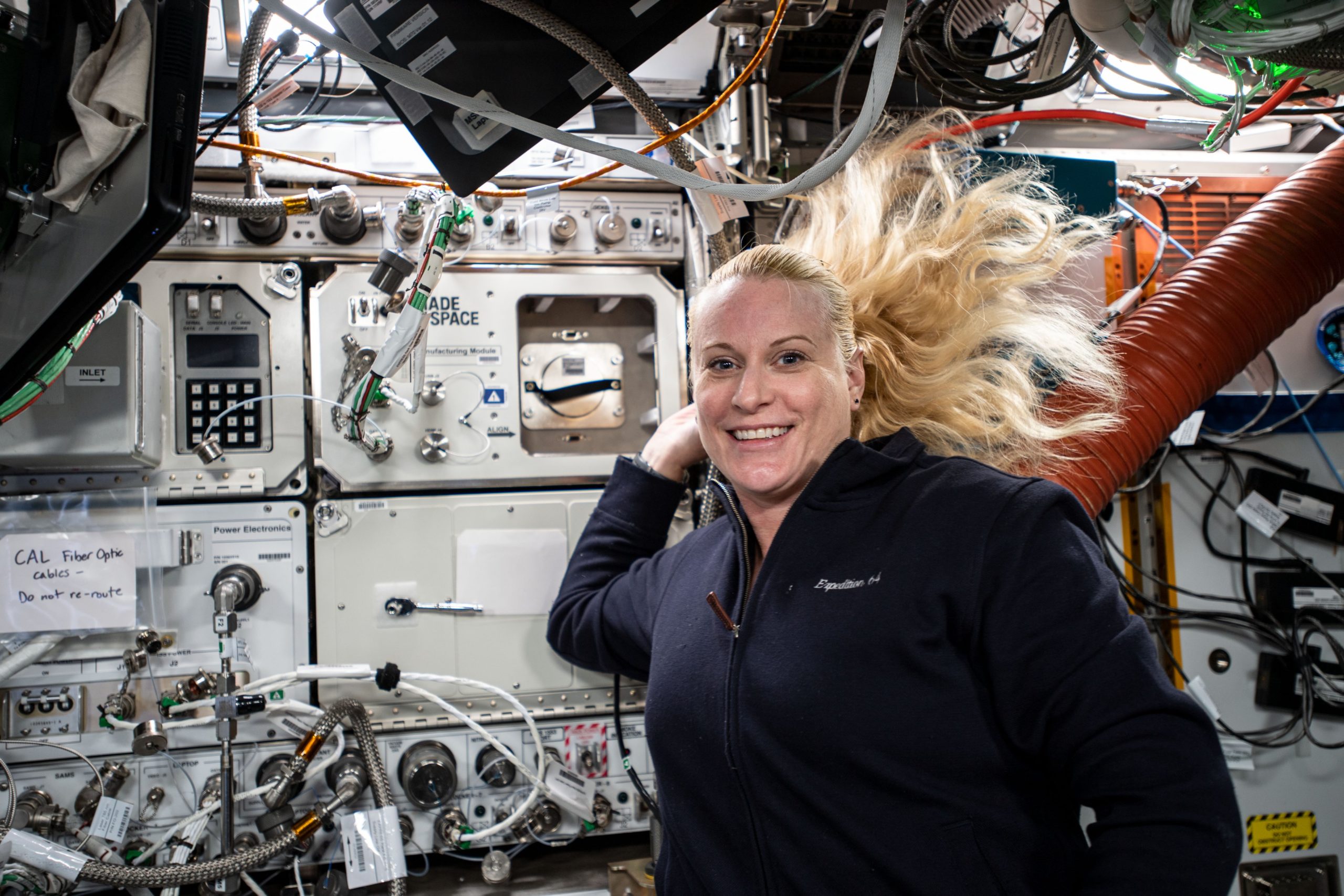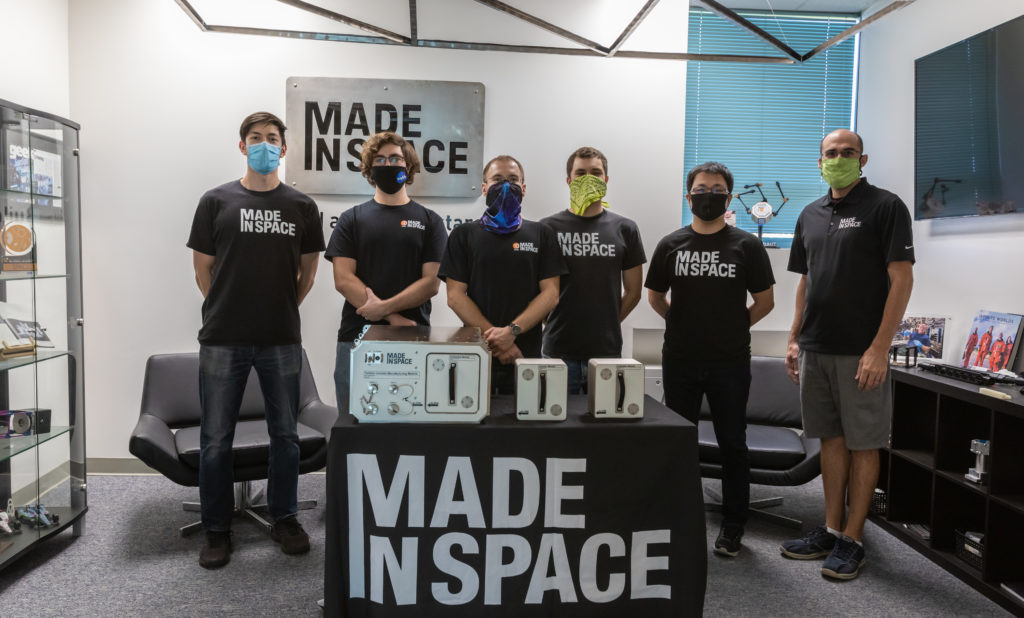Manufacturing turbine parts with additive manufacturing (AM) technology has helped accelerate product development, creating very complex and intricate part geometries without the need for any tooling. Aerospace companies have been integrating AM into their production strategies for several years, relying on metal AM for cost-effectiveness and ease of manufacturing. Taking turbine parts development one step further, Redwire, a new company involved in mission-critical space solutions, announced it had manufactured a single-piece ceramic turbine blisk in space for the first time.
This bladed turbine disk was successfully created using the first stereolithography (SLA) printer to operate in orbit: the Ceramic Manufacturing Module (CMM), which was developed by Redwire subsidiary Made In Space. Just two months after it was launched to space aboard Northrop Grumman’s 14th commercial resupply mission (NG-14) on October 2, 2020, the commercially developed in-space manufacturing facility successfully operated with full autonomy using SLA technology and pre-ceramic resins to manufacture the single-piece ceramic turbine blisk, along with a series of material test coupons, ideal for determining the properties of the ceramics.
According to Redwire, the successful manufacture of these test samples in space is an important milestone to demonstrate the proof-of-potential for CMM to produce ceramic parts that exceed the quality of turbine components made on Earth. The ceramic blisk and test coupons will be stowed and returned to Earth for analysis aboard SpaceX’s Dragon spacecraft once the company’s 21st commercial resupply services (CRS-21) mission to the International Space Station (ISS) is completed, with an estimated return date to Earth on January 5, 2021.
“This is an exciting milestone for space-enabled manufacturing and signals the potential for new markets that could spur commercial activity in low Earth orbit,” said Made In Space President Tom Campbell. “Building on our in-space manufacturing expertise and our partnership with NASA, Redwire is developing advanced manufacturing processes on orbit that could yield sustainable demand from terrestrial markets and creating capabilities that will allow humanity to sustainably live and work in space.”
Developed in partnership with the ISS Research Integration Office at the National Aeronautics and Space Administration (NASA)’s Johnson Space Center, in Houston, the ceramic facility is one of three ISS pilot payloads developed through this partnership that aims to catalyze and scale demand for commercial capabilities in low Earth orbit (LEO) by producing high-value products for terrestrial use. Made In Space first demonstrated the SLA printing technology found inside CMM through a series of parabolic flights funded via NASA’s Flight Opportunities program in 2016.
For high-performance applications such as turbines, nuclear plants, or internal combustion engines, even small strength improvements can yield years-to-decades of superior service life. According to experts, light-weighting in aerospace components and system designs is an effective way to achieve energy consumption reduction and performance enhancement. In fact, using additive manufacturing technologies, capable of producing composite or multi-material components, is an enabler for light-weighting, as features formally associated with one principal function can be designed to fulfill multiple functionalities.
But Redwire is not only using additive technology to make complex parts, it’s moving it 400 kilometers off-Earth, to LEO, to demonstrate that ceramic manufacturing in microgravity could enable temperature-resistant, reinforced ceramic parts with better performance, including higher strength and lower residual stress.

Flight engineer Kate Rubins of NASA with the Ceramics Manufacturing Module installed and ready for operations on the International Space Station (ISS) on October 28, 2020. Image courtesy of NASA/Redwire
Redwire’s Chief Technology Officer (CTO) and Made In Space Co-founder Michael Snyder described the Ceramic Manufacturing Module’s successful on-orbit operations as an important step toward full-scale manufacturing of materials products that can improve industrial machines used right here on Earth. The expert, who was also Made In Space’s Chief Engineer for 10 years, went on to explain that the space manufacturing capabilities demonstrated by CMM have the potential to stimulate demand in LEO from terrestrial markets which will be a key driver for space industrialization.
This last successful CMM mission builds upon Redwire’s flight heritage with four other additive manufacturing facilities developed by the Made In Space team that have successfully flown and operated on the space station. In 2014, the Silicon Valley startup became the first company to 3D print an object in zero gravity, and months later it launched two 3D printers to the ISS, one of which, the Additive Manufacturing Facility (AMF), is available for commercial use. Followed by the Fiber Optics (MIS Fiber) miniature fiber-pulling machine for producing optical fibers, and a Plastic Recycler to process waste plastic into feedstock filaments for the AMF. The CMM makes five and soon, Made In Space’s spacecraft-assembly technology for repairing existing satellites in orbit is expected to launch in 2022. With Archinaut, both Redwire and NASA expect a complete game changer with futuristic capabilities that could accelerate the space economy.
Subscribe to Our Email Newsletter
Stay up-to-date on all the latest news from the 3D printing industry and receive information and offers from third party vendors.
You May Also Like
3D Printing Unpeeled: New Arkema Material for HP, Saddle and Macro MEMS
A new Arkema material for MJF is said to reduce costs per part by up to 25% and have an 85% reusability ratio. HP 3D HR PA 12 S has been...
3D Printing News Briefs, January 20, 2024: FDM, LPBF, Underwater 3D Printer, Racing, & More
We’re starting off with a process certification in today’s 3D Printing News Briefs, and then moving on to research about solute trapping, laser powder bed fusion, and then moving on...
3D Printing Webinar and Event Roundup: December 3, 2023
We’ve got plenty of events and webinars coming up for you this week! Quickparts is having a Manufacturing Roadshow, America Makes is holding a Member Town Hall, Stratafest makes two...
Formnext 2023 Day Three: Slam Dunk
I’m high—high on trade show. I’ve met numerous new faces and reconnected with old friends, creating an absolutely wonderful atmosphere. The excitement is palpable over several emerging developments. The high...

































